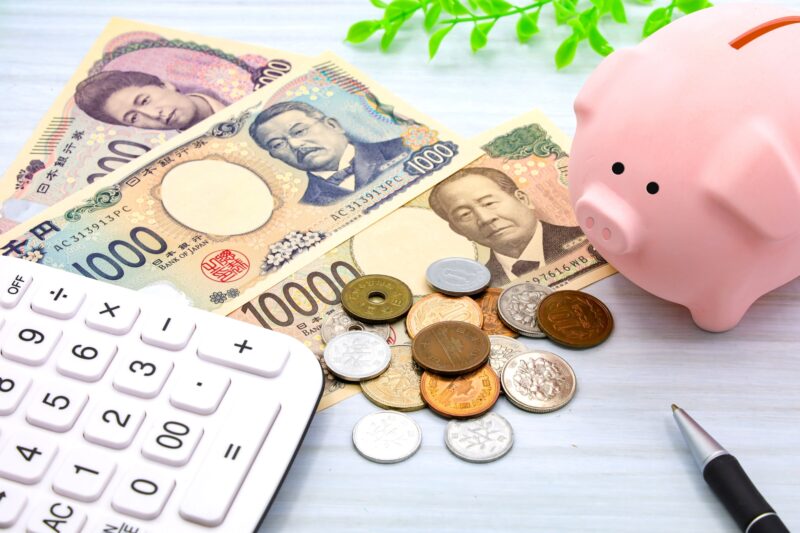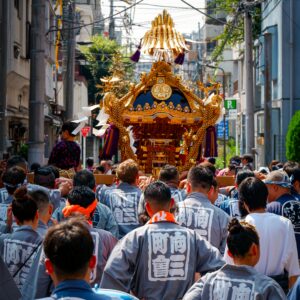Guide to Japanese Currency and Payment Methods for Travelers
Table of Contents
- The Japanese Yen: Japan’s Official Currency
- Where and How to Exchange Money in Japan
- Payment Methods in Japan: Cash is Still King
- Credit and Debit Cards in Japan: Convenience with a Few Caveats
- Digital Payments and Mobile Wallets in Japan
- Tipping in Japan: No Need to Tip
- ATMs and How to Withdraw Cash
- Wrap up: Navigating Money and Payments in Japan
- Looking for a tour agency to help with your planning?
Traveling to Japan offers an incredible experience. But to make the most of your trip, you’ll need to get familiar with the Japanese currency and payment methods. This guide covers everything from the Japanese yen to the best ways to pay for goods and services, ensuring you navigate Japan with ease.
The Japanese Yen: Japan’s Official Currency

What is the Japanese Yen?
The Japanese yen (JPY), symbolized as ¥, is the official currency of Japan. It is the third most traded currency globally, following the US dollar and the euro. Knowing how the yen works is essential for managing your expenses while visiting. The yen is available in both coins and banknotes.
- Coins: ¥1, ¥5, ¥10, ¥50, ¥100, and ¥500
- Banknotes (Bills): ¥1,000, ¥5,000, and ¥10,000
The coins are typically used for smaller purchases, and the bills for larger transactions. Below is a breakdown of the most common denominations.
Coins
Japanese yen coins come in six denominations, each with its unique characteristics and uses. Here’s a breakdown of the most commonly encountered coins:
- ¥1 Coin: The lightest coin, made entirely of aluminum, weighing just 1 gram. It’s often used for small purchases, like vending machine drinks, and is commonly seen in daily transactions. It’s also notable for being able to float on water, which is quite rare for a coin.
- ¥5 Coin: Easily recognizable by the hole in the center, the ¥5 coin is not only practical but also carries cultural significance. It’s considered a symbol of good luck and is often used for offerings at shrines. Despite its small size, the ¥5 coin is often used in places like vending machines, small shops, and buses. In fact, the phrase “go-en” (five yen) is also a homophone for “good luck” or “destiny” in Japanese, enhancing its popularity for special occasions.
- ¥10 Coin: This copper-colored coin is one of the most frequently used, particularly for daily transactions like paying at convenience stores. The ¥10 coin features the Phoenix Hall of Byodo-in Temple in Kyoto, a UNESCO World Heritage Site, making it a coin with historical significance.
- ¥50 Coin: Easily identifiable by its ridged edges and its unique hole, the ¥50 coin is often used for public transport tickets, including subways and buses. It’s also commonly used in vending machines and coin lockers. The coin features three chrysanthemums, a symbol of Japan’s national flower.
- ¥100 Coin: One of the most commonly used coins, the ¥100 coin is the equivalent of a $1 bill in many other countries. It’s widely accepted for vending machines, convenience store transactions, and small purchases like snacks. The coin’s design includes the famous sakura (cherry blossoms).
- ¥500 Coin: The largest and heaviest coin, the ¥500 coin is made from a combination of cupronickel and is used for medium-value purchases. This coin is often used in larger vending machines or to pay for small items at shops. It is also sometimes used to purchase inexpensive bento meals, especially in convenience stores. The coin features the paulownia, a symbol of Japan’s national tree, on the front, and bamboo and tachibana leaves on the back.
Paper Bills
Japan’s banknotes are equally distinctive, with each denomination carrying cultural and historical references. The following are the main bills you’ll encounter:
- ¥1,000 Bill: The most common bill for small to mid-range purchases, such as a casual lunch or an inexpensive souvenir. The current design features Shibasaburo Kitasato, a pioneering bacteriologist, on the front. The back showcases the iconic Great Wave off Kanagawa by Katsushika Hokusai, a piece of art that has come to represent Japan globally.
- ¥5,000 Bill: Less common than the ¥1,000 bill, but still useful for larger purchases or paying for meals at mid-range restaurants. The front features Ichiyo Higuchi, a renowned Japanese writer, and the back depicts Kakitsubata-zu, a painting of irises by Ogata Korin. The violet hue of the bill adds a distinctive look among the other denominations.
- ¥10,000 Bill: Japan’s highest denomination, the ¥10,000 bill is typically used for significant transactions like hotel stays or larger shopping sprees. The front features Fukuzawa Yukichi, a prominent educator and founder of Keio University, while the back displays the Phoenix statue from Byodo-in Temple, symbolizing strength and rebirth.
Tip from Firefly Japan: When traveling around Japan, especially in busy areas like Tokyo or Kyoto, it’s essential to have a good mix of coins and bills. While ¥1,000 notes are common, having coins such as ¥100 and ¥500 will make it easier to pay for public transport, vending machine items, and small purchases. Carrying a few larger bills like ¥5,000 and ¥10,000 is useful for shopping and dining, but be mindful that smaller shops and markets may not accept these larger bills for small transactions.
Where and How to Exchange Money in Japan
Exchanging Foreign Currency for Yen
When you arrive in Japan, you’ll need to exchange your foreign currency into yen. While exchange rates can vary, Japan offers plenty of options to do this quickly and conveniently.
Airport Currency Exchange
You’ll find currency exchange counters at major airports like Narita, Haneda, and Kansai. Although exchange rates at airports may be slightly higher than in the city, it’s a good idea to exchange a small amount of money upon arrival for immediate expenses like transport and food.
Exchange Services in the City
For better exchange rates, consider visiting exchange offices in larger cities. You’ll find these in train stations, shopping malls, or dedicated exchange offices. Japan Post branches also offer currency exchange services at competitive rates.
Tip from Firefly Japan: Our local guides recommend using currency exchange services like those found at Bic Camera or Yodobashi Camera, where you can get better rates than at the airport. Plus, they often have no transaction fees.
ATMs and Bank Withdrawals
ATMs are widely available in Japan, but not all of them accept foreign cards. ATMs in convenience stores like 7-Eleven or at specific banks like Shinsei Bank or Citibank allow international debit and credit cards. These ATMs offer easy access to yen and often have English-language instructions to guide you through the process.
Tip from Firefly Japan: Before you use your card at an ATM in Japan, check with your bank about any international fees. You’ll want to be aware of potential charges for currency conversion and ATM withdrawals.IM card vending machines at airports often provide instructions in multiple languages, but setting up the APN settings manually may still be required for some devices.
Payment Methods in Japan: Cash is Still King
The Cash-Dominant Society of Japan
Despite the rise of digital payments, cash is still the preferred method of payment in many places, especially in rural areas and small businesses. This is why having some cash on hand is recommended.
How to Pay with Cash
Paying with cash in Japan is straightforward. You hand over your yen to the cashier, and they will give you change. Typically, cashiers are very efficient and organized, so expect the exchange of money to be quick and courteous.Tip from Firefly Japan: Always carry a mix of yen bills and coins. Japan’s vending machines, train stations, and convenience stores often require exact change. Having ¥100 and ¥500 coins on hand will help you avoid frustration.
Credit and Debit Cards in Japan: Convenience with a Few Caveats
Credit Cards in Japan
Japan has become more credit card-friendly, especially in major cities like Tokyo, Osaka, and Kyoto. Many larger hotels, restaurants, department stores, and shopping malls accept international credit cards like Visa, MasterCard, and American Express. However, smaller establishments, including family-owned restaurants and many rural shops, may not accept them.
Debit Cards and International ATMs
Debit cards are accepted in Japan, but, similar to credit cards, they may not work in all locations. Look for ATMs that are specifically marked as accepting international cards (like those found in 7-Eleven stores or Shinsei Bank).
Tip from Firefly Japan: To make things easier, notify your bank ahead of time about your travel plans to Japan. This will help prevent your credit or debit card from being blocked due to suspected fraud.
Digital Payments and Mobile Wallets in Japan
Digital Payments: The Future of Japan’s Payments
Mobile payments and QR codes are growing in popularity in Japan, especially in urban centers. Apps like Apple Pay, Google Pay, and Rakuten Pay are widely accepted across shops, restaurants, and even transportation services.
PayPay and QR Code Payments
PayPay is one of the most popular mobile payment apps in Japan. Users can scan QR codes to pay, and the app often provides perks such as discounts or loyalty points.
How to Use PayPay
To use PayPay, you simply download the app, register your payment method (either through a credit card or bank account), and then use it to pay by scanning a QR code at the checkout. It’s quick, secure, and convenient.
Tip from Firefly Japan: If you’re going to use mobile wallets like PayPay, make sure to set it up before your trip. Having it ready from the start can help save time and avoid confusion when paying for meals, transportation, or shopping.
Tipping in Japan: No Need to Tip
Why Tipping is Unnecessary in Japan
Tipping is not common in Japan and can even be considered rude in certain situations. Service staff are compensated adequately through their wages, and excellent service is considered the norm. Instead of tipping, simply saying “thank you” or showing polite appreciation is sufficient.
Tip from Firefly Japan: If you feel compelled to show appreciation for exceptional service, consider giving a small gift, such as local souvenirs or snacks, instead of money. This is a thoughtful gesture that will be much more appreciated.
ATMs and How to Withdraw Cash
Using ATMs in Japan
If you need cash, Japan has plenty of ATMs. However, as mentioned earlier, not all ATMs accept foreign cards. To avoid complications, use ATMs in 7-Eleven stores, Japan Post, or Shinsei Bank, as these are more likely to accept your international debit or credit card.
Tip from Firefly Japan: ATMs in Japan usually have English-language instructions, so you can easily withdraw cash from your international account. Be mindful of any international fees associated with withdrawals.
Understanding how to manage your money in Japan is essential to making the most of your travels. Whether you’re using cash, credit cards, or mobile payment apps, knowing where and how to exchange currency and how to pay efficiently will make your trip much smoother.
With a few simple tips, you’ll have no trouble paying for food, transportation, or souvenirs, and you’ll be able to experience Japan without worrying about your money.
Final Tip: Always carry a small amount of cash for small transactions, and have a credit card or mobile payment app set up for larger purchases. This way, you can enjoy your travels with peace of mind and avoid any surprises.
| For a comprehensive guide to planning your trip, start with our Japan Travel Tips. |
Looking for a tour agency to help with your planning?
Contact Firefly Japan to book a private luxury tour in Tokyo & Kanto


